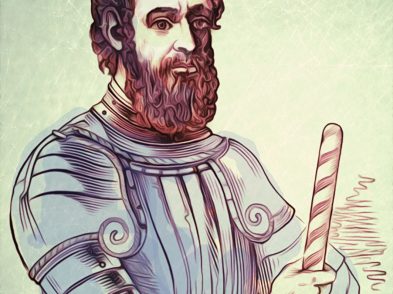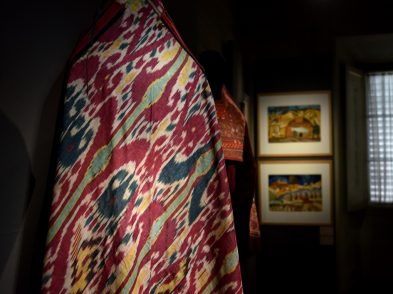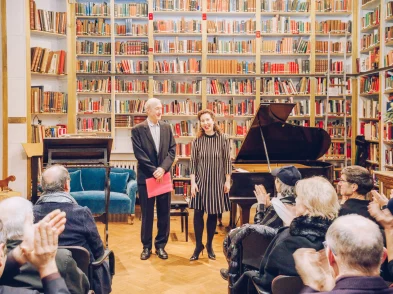In 402AD, the Roman emperor Honorius decreed the city of Ravenna the capital of the Western world, a title it kept until the eighth century. The city became the center for mosaic art in the fifth and sixth centuries, and Ravenna, which is accessible by train from Florence (see ‘Getting there’) is home to eight UNESCO World Heritage sites thanks to its early Christian mosaics.
Developed around 300–331BC by the people of the Mediterranean, mosaics are a decorative art found mainly in churches or on the pavement of the floor in houses. Drawing on rich traditions of cultural or spiritual themes, the artists created pictures or patterns by placing small tiles, fragments of pottery, stone, or glass in a cement or plaster mixture.
You can see spectacular examples of mosaic art on the walls and ceilings of the churches and sacred monuments of Ravenna. They are some of the finest works in Western art. Their opulence is overwhelming, and the memory of these works remains with the visitor long after seeing them.
Among the important monuments of Ravenna, three sites in particular are noted for their exquisite mosaics. You can visit all three monuments with a 7.50 euro cumulative ticket.
Battistero Neoniano
Piazza Duomo
9am to noon and 2:30pm to 6:30pm
The most ancient monument in Ravenna, the cathedral dome of this octagonal brick church is covered with mosaics that are intense contrasts of color laid out in three circular bands. In the center band, the Baptism of Christ is depicted naturalistically. The next band describes the Apostles, with St. Peter meeting St. Paul. Around that is a decorative band, in the scheme of a throne and a cross, alternating with an altar and an open book, surrounded by plants. This style is quite unusual because its vitality and intense colors.
Basilica di San Vitale
Via San Vitale, 17
April to September, daily 9am to7pm; March and April, daily 9am to 5:30pm; November to February 9:30am to 4:30pm
Built between 526 and 548, San Vitale contains some of the most important Byzantine mosaics in the Western world. It is dedicated to Emperor Justinian and his wife, Theodora, who are depicted in a pair of mosaics flanking the altar. Although this beautiful basilica is small, one feels dwarfed under its elegant cupola. The large lunettes located under the vault, depicting Old Testament sacrifices, are especially noteworthy. The use of space within San Vitale, the play of light within its interior and the brilliant green and gold of its mosaics are all truly magnificent!
Mausoleum of Galla Placidia
Via San Vitale, 17 (Behind the Basilica di San Vitale)
April to September, daily 9am to7pm; March and April, daily 9am to 5:30pm; November to February 9:30am to 4:30pm
The marble and rich mosaic decorations in this fifth-century mausoleum, built in the shape of a Latin cross, supposedly houses the remains of Galla Placidia (388–450), who was the daughter, sister, wife and the mother of Roman emperors. In the dimly lit interior it is a bit hard to see the incredible ceiling covered in mosaics: a midnight-blue sky, filled with white and red moonflowers that are the ‘stars’. Four evangelists are at each corner. These mosaics, the oldest in the city are Ravenna’s best preserved mosaic monuments. Do not miss this structure, for the sliver of artificial light on the alabaster panels that shines onto the cubes of stone and colored glass creates a most compelling setting.
(A bit of trivia: I read that Cole Porter, supposedly, was inspired to compose Night and Day after visiting this mausoleum in the 1920s.)
JANE’S GEM
Dante Alighieri’s tomb is in Ravenna, built in 1780. Many assume that Dante (1265–1321) is buried in the church of Santa Croce, in Florence, where there is a cenograph to him. He was exiled from Florence in 1300, because of his opposition to the government that was then in power, and never again returned to Florence. He was condemned to death at the stake if ever caught.
When he died in Ravenna in 1321, the Florentines requested his remains be returned to his home town. However, when they came to collect his remains, the burial recess was empty.
In July 1999, an envelope containing ashes was found in the National Library of Florence; they were purported to be Dante’s. As you can imagine, whether they are or not is a hotly debated topic.
Getting there: Take the train from Florence’s SMN Station to Bologna and connect to one of the many local trains to Ravenna.








